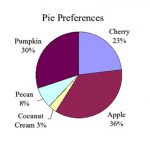The dollar's strong upside momentum, which accelerated after the FOMC meeting, stalled in recent days. If interest rate considerations were the key driver, the Fed funds futures strip appears to have made the necessary adjustment. By our calculations, the September contract has a 25 bp hike fully discounted, and about a fifth of a second hike priced into the December contract. Meanwhile, the weekly initial jobless claims have risen for three weeks through September 24, warning the path forward will not be a straight line. The composite PMI has fallen for four consecutive months, including the preliminary September estimate, and at 54.5, it is at its lowest level in 12 months. The greenback's rally has stretched the momentum indicators, and a
Topics:
Marc Chandler considers the following as important: 4.) Marc to Market, 4) FX Trends, Featured, newsletter, USD
This could be interesting, too:
Nachrichten Ticker - www.finanzen.ch writes Die Performance der Kryptowährungen in KW 9: Das hat sich bei Bitcoin, Ether & Co. getan
Nachrichten Ticker - www.finanzen.ch writes Wer verbirgt sich hinter der Ethereum-Technologie?
Martin Hartmann writes Eine Analyse nach den Lehren von Milton Friedman
Marc Chandler writes March 2025 Monthly
The dollar's strong upside momentum, which accelerated after the FOMC meeting, stalled in recent days. If interest rate considerations were the key driver, the Fed funds futures strip appears to have made the necessary adjustment. By our calculations, the September contract has a 25 bp hike fully discounted, and about a fifth of a second hike priced into the December contract. Meanwhile, the weekly initial jobless claims have risen for three weeks through September 24, warning the path forward will not be a straight line. The composite PMI has fallen for four consecutive months, including the preliminary September estimate, and at 54.5, it is at its lowest level in 12 months.
The greenback's rally has stretched the momentum indicators, and a correction/consolidative phase seems likely ahead of the US employment report on October 8. Only a dismal report, as in say 100k or less, could deter the Fed from tapering next month. Several officials have suggested that the criteria for tapering has already been met. Still, before the Fed meets in early November, the US debt ceiling will be addressed. A missed debt servicing payment is the other wild card that could prevent the Fed from moving. Even if it is a low probability event, the impact could be disastrous as both Treasury Secretary Yellen and Fed chief Powell warned Congress several times in unambiguous language.
Dollar Index: The Dollar Index rose for the fourth consecutive week, matching its longest advance in five years. It moved above the upper Bollinger Band (which starts next week ~94.35) but moved back into the band on September 30 as the upside momentum faded and losses ahead of the weekend pared the gains scored earlier in the week. The MACD and Slow Stochastic appear stretched, and although they may be poised to turn down, they haven't. Ironically, the Dollar Index put in a low on September 3 when some observers thought the disappointing jobs report would stay the Fed's hand. Instead, the index rallied from roughly 92.00 to 94.50. That move may be corrected, and a break of 93.90 could spur a move into the 93.25-93.50 band. On the upside, 94.50 is the (38.2%) retracement objective of the sell-off since the March 2020 high near 103.
Euro: Having taken out $1.17 in the prior week, the euro was sold through $1.16 this past week. It found bids slightly below $1.1565. We feared a break of $1.16 could see a move toward $1.1490, which is the (50%) retracement objective of the rally from the March 2020 low ($1.0635). The pre-weekend bounce stalled in front of $1.1610. The momentum indicators are stretched but still headed down. The selling pressure pushed the euro below its lower Bollinger Band on a closing basis on Wednesday and Thursday last week before the pre-weekend uptick. A move above $1.1630 may begin squeezing the late shorts. However, it may require a push above $1.17 to boost the chances that a significant low is in place. Ideally, there would be a reversal pattern on the daily charts.
Japanese Yen: Rising US yields lifted the dollar a little above JPY112.00, its best level since February 2020 when it approached JPY112.25. It was extremely overextended, as illustrated by four consecutive closes above the upper Bollinger Band. And as US yields softened and the economic news from Japan improved, the dollar reversed lower to staddle the JPY111 level before the weekend. In early July, the dollar spent the better part of two full sessions above JPY111, but the breakout was a head fake, and the greenback fell to almost JPY108.70 in early July. The MACD and Slow Stochastic appear set to turn lower with even the slightest follow-through dollar selling early next week. The JPY110.60 area is the (50%) retracement of the rally since the FOMC meeting, and the JPY110.25 area corresponds to the next retracement objective (61.8%) and houses the 20-day moving average.
British Pound: Sterling dropped three cents in the first three days of trading last week. The hawkish BOE rhetoric helped lift rates but failed to do sterling any favors. It finally found support near $1.3400, which is just ahead of the (61.8%) retracement objective of sterling's rally since a base around $1.2850 was forged last October. The bounce before the weekend that began from below the lower Bollinger Band (~$1.3460) recovered nearly half of what sterling lost since the FOMC meeting found near $1.3580. Follow-though buying early next week may encounter resistance around $1.3625 and then $1.3700, where the 20-day moving average is found. The MACD looks like it is turning higher, but the Slow Stochastic has flatlined in oversold territory. The euro provided a head fake of its own, so to speak. It broke above formidable resistance near GBP0.8600 and challenged the 200-day moving average (~GBP0.8645), which it has not done since early January. As the market was getting bulled up, the euro came off hard, falling about 1% in the last two sessions. The lower end of the range is found in the GBP0.8500-GBP0.8525 band.
Canadian Dollar: The US dollar ground slow lower after peaking on September 20, just short of CAD1.2900. It bottomed near CAD1.2600 in the first part of the week before bouncing back to almost CAD1.2780 to meet the (61.8%) retracement objective. The greenback retreated again ahead of the weekend and settled on its lows. It looks set to retest the CAD1.2600 floor again. A break could signal a test on the possible trendline off the late July and early September lows, which begins the new week near CAD1.2550. Last month's low was a whisker below CAD1.2500, and the 200-day moving average is around CAD1.2520. On the other hand, a possible head and shoulders pattern has formed, with a neckline by CAD1.2585. The measuring objective convergences with the (61.8%) retracement objective of the rally since the multi-year low was set on June 1 (~CAD1.20) found close to CAD1.2365.
Australian Dollar: The gains ahead of the weekend were sufficient to stop the bleeding after a three-week drop. The year's low was set on August 20 by $0.7100. The recovery fizzled near $0.7480 in early September and was already in a downtrend before the FOMC meeting. It had begun basing around $0.7220 before dropping to about $0.7170 in the middle of the week. Unlike the euro, yen, and sterling, the Aussie did not make new lows for the year, and in the last two sessions, has recovered to the upper end of the range that dominated in the second half of September (~$0.7300). The momentum indicators look constructive. It probably requires a move above $0.7325 to boost confidence that a low is in place. The Reserve Bank of Australia meets next week, and its willingness to look past the impact of the pandemic has surprised the market at the last two meetings. Lastly, the net short speculative position in the future market grew each week of Q3, and at 86.4k contracts as of September 28 is a record. A technical bounce could turn into a dramatic short-squeeze.
Mexican Peso: It appears to have taken a 25 bp rate hike, a hawkish central bank, and new of record remittances to step the peso's sell-off that had pushed it to three-month lows. The greenback has closed for three consecutive sessions above the upper Bollinger Band before the pre-weekend move. When this happened in the second half of June, rather than signal a breakout, the dollar proceeded to fall from a high of almost MXN20.75 to below MXN19.72 in the four sessions that followed the last close above the Bollinger Band. This is not to say it will happen again, but simply to illustrate how dramatic the pullback from such over The US dollar staged a key reversal ahead of the weekend by first trading above the previous session's high to new highs for the move and then selling off, and closing below the previous session's low. Of course, the dollar was broadly weaker and risk appetites firmed after a soggy start. A convincing break of MXN20.40 could signal a move into the MXN20.20-MXN20.30 area. The momentum indicators are stretched, and with even modest follow-through dollar-selling, they may turn lower.
Chinese Yuan: The onshore market is closed for the Golden Week holiday and will re-open on October 8. The dollar closed below the CNY6.45-CNY6.50 band that was in place for most of Q3, though frayed in the first half of September. Before the holiday, the dollar tested the 200-day moving average in the middle of the band. Against the offshore yuan, it set a low in September near CNH6.4250. It recovered to CNH6.4880 before falling for seven of the nine sessions through the end of last week. The greenback briefly to about CNH6.4285 ahead of the weekend. If China has instructed its large state-owned companies to secure energy supplies (likely gas and coal, where domestic inventories are reportedly light), then a little stronger yuan may help rather than hurt. Meanwhile, the "prisoner" swap with Canada, China's pledge not to build new coal-burning electric generators abroad, and the appreciation of the yuan may begin to look the groundwork for a face-to-face between Biden and Xi. Recall that the Phase 1 trade agreement negotiated by the Trump administration ends in the middle of Q1 22. The US Trade Representative is expected to recognize this in a speech at the start of the week and explain that new measures are being considered. Consultation with allies might not offer compelling leverage as the US demanded a fixed (dollar) share of China's import market, which comes at the expense of other exporters.
Tags: #USD,Featured,newsletter








